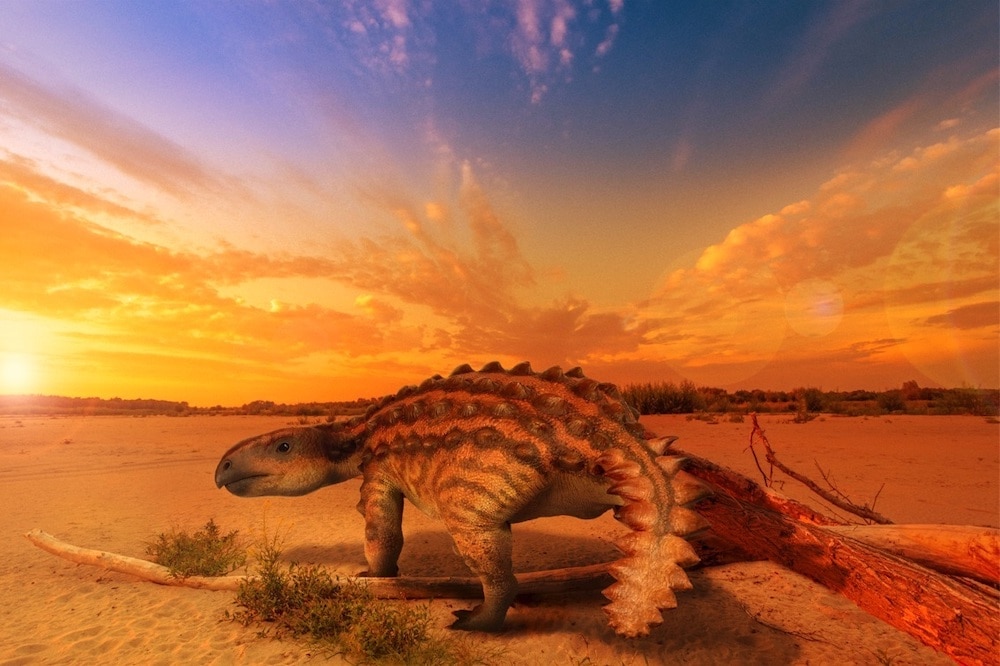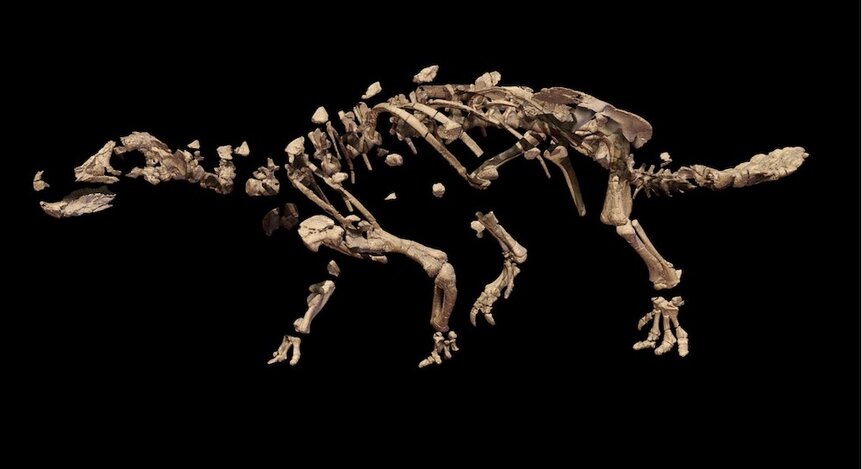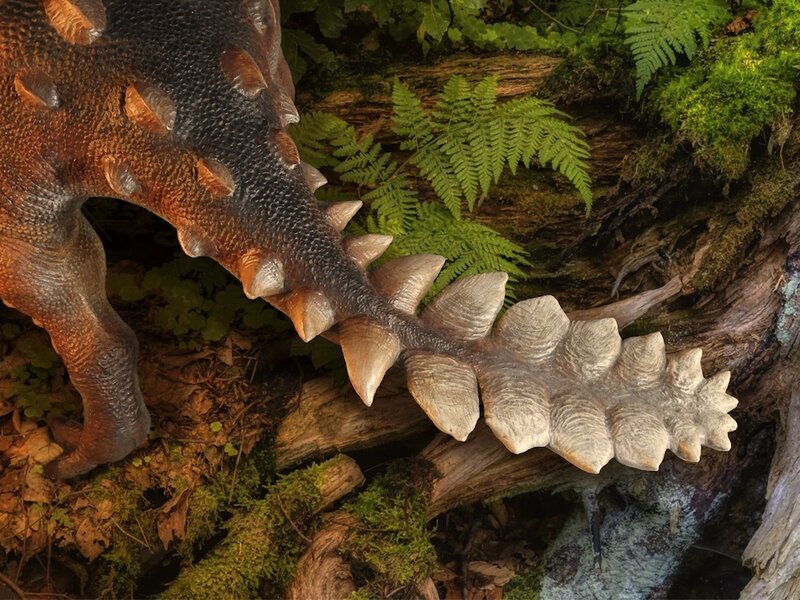Create a free profile to get unlimited access to exclusive videos, sweepstakes, and more!
Newly discovered Ankylosaur was a tank with a battle axe tail
Dino battles were even crazier than we thought.

Ankylosaurs are armored dinosaurs most-closely related to stegosaurs. They’re most well known for their broad feet, weaponized tails, and being the most hardcore of all herbivorous dinosaurs. Now, a newly discovered species called Stegouros elengassen is rewriting what we know about these ancient animals.
Alexander Vargas from the Department of Biology at the University of Chile, and colleagues, identified the new species based on an 80% complete skeleton uncovered in the Patagonian region of Chile. It sheds light on the evolution of the so-called broad-footed dinosaurs, and has a wicked battle axe of a tail, to boot. The results of its study were published in the journal Nature.
Stegouros elengassen's unique tail structure consists of a flat surface with a series of sharp, pointed blades along each side, reminiscent of the macuahuitl, an Aztec war club. The tail, however, represents only the beginning of the ways it is different from other ankylosaurs.
“The skull doesn’t have any osteoderms, none of the plates that are stuck to the skull which are common in ankylosaurs of the north,” Vargas told SYFY WIRE. “The beak is very narrow and it’s a bit curved, kind of eagle-like, while northern ankylosaur beaks are more duck-like. And the limbs are slender, the whole broad-footed condition that’s expected for ankylosaurs is absent.”
When the fossil was first uncovered, researchers believed they might have found a completely different kind of dinosaur because the limbs weren’t at all what they expected. Animals like stegosaurs and ankylosaurs are commonly called broad-footed dinosaurs precisely because they share that trait, but Stegouros challenges that notion.
“This actually means the stegosaurs and ankylosaurs independently evolved their broad feet. The funny thing is the first broad-footed dinosaurs were not broad-footed at all,” Vargas said.
There has been some debate among paleontologists regarding how closely related ankylosaurs and stegosaurs actually are. The discovery of Stegouros doesn’t entirely solve that question but it does support the view that they are related, owing to the almost hybridized nature of this species.
“It has a mixture of stegosaur and ankylosaur traits. Many traits we think of as stegosaurian are not actually stegosaurian but are from the common ancestor. Stegouros is barely an ankylosaur, but it’s closer to them than stegosaurs. That was not an obvious conclusion to us right away,” Vargas said.
The team had to crunch the numbers on five different phylogenetic analyses in order to properly place Stegouros within the story of dinosaur evolution. Happily, all five of those analyses consistently showed that Stegouros was related, though likely traveled a different evolutionary path than its more well-known relatives. It lived between 72 and 75 million years ago, but the origins of the species are probably much deeper in time, beginning approximately 100-million-years earlier.
“There are actually two main lineages here that split very early in their evolution, in the mid-Jurassic, Vargas said. “One of them leads to the true ankylosaurs and the other leads to South American ankylosaurs. They are not your regular flavor and split not too long after their latest common ancestor with stegosaurs. That’s why they have a mix of traits.”
Vargas and colleagues are proposing a new clade — Parankylosauria, meaning next-to or alongside — to house this species as well as its first ancestor and its descendants. Though Vargas lovingly refers to them as the “weird” ankylosaurs. And there’s nothing weirder about them than their tails.
The bones were placed under CT and micro-CT scans in order to get a clear look at what was going on inside and how the pieces of the tail fit together. Five large osteoderms (bony deposits which form scales and plates) are completely fused. Further, the tail is shorter than typical ankylosaurs by approximately 10 vertebrae, which probably allowed Stegouros to keep its tail from dragging and helped to wield it as a weapon.
“It’s almost impossible they did not use them for defense,” Vargas said. “Many reptiles use their tails for defense, even those who have no sophisticated tail weapons. Even an iguana will whip you with their tails. There are studies that say any animal that has a stiff trunk, is an herbivore, and has osteoderms running into its tail will be using it as a weapon. Sometimes those osteoderms become fancy and evolve into really specialized weapons.”
Stegouros is the poster dino for being cute but deadly, and proof positive that if we can imagine a way to build a weapon, nature figured out how to do it better millions of years ago. It’s also evidence that the story of our planet’s history is only partly told. There are still cool things out there for us to find, and if there are rad dinosaurs waiting to be discovered, the kid inside each of us demands that they be found.




























